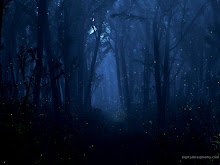Get that thick, sugary syrup to flow. You might have no choice!
Welcome to the BUG-IN WITH ROMANCE BLOG EVENT. If you’ve been following this blog hop then you’re already familiar with what it’s about. If not, allow me to give you a quick run-down.
We're a group of mostly romance authors that are worried about general fox-hole morale when the shit hits the fan. So you've got your bug-out bags packed, your medicine stocked up, your 2 weeks of food stuff hidden in the air-space behind the dry wall in your home (just in case the government shows up to confiscate your horde of food), you've stored away some candles and extra batteries, and you're ready to go. Well, what about Mom's sanity? What about those almost twenty year old daughters hooked on romance novels? What about...How are you planning to while away the boredom in your little safe place? We've got you covered. Win some romance novels and tick off your preparedness checklist with us as we countdown to THE END OF THE WORLD AS WE KNOW IT.
Each author will be giving away a paperback copy of her book, a book about her Bug-In subject, or one of her favorite reads. So, stick around to enter to win each day. The blog event is a true blog hop in the sense that it begins with one blog post and moves on each day to another participating author's blog. Each day the hostess will post the link to the next day's blog post and contest. All you do is start today, here, and pop over to the next blog tomorrow.
 No matter where you are, if you’re in a situation in which the power grid goes down for an extended period of time, you better be prepared to be resourceful. Don’t count on your local grocery store for food. Even with a ‘worst-case’ scenario Martial Law in place, they’ll be raided within days. If you’ve stock-piled food, you still need to fine a way to provide your own food when your stash runs out. Here in New England and many parts of the world, that means tapping into nature the old-fashioned way with nutrient-rich Maple Syrup.
No matter where you are, if you’re in a situation in which the power grid goes down for an extended period of time, you better be prepared to be resourceful. Don’t count on your local grocery store for food. Even with a ‘worst-case’ scenario Martial Law in place, they’ll be raided within days. If you’ve stock-piled food, you still need to fine a way to provide your own food when your stash runs out. Here in New England and many parts of the world, that means tapping into nature the old-fashioned way with nutrient-rich Maple Syrup. While I don’t pen post-apocalyptic novels, I do write about time-travel. My characters often travel to time periods that had no electricity. A simpler time when folks had to live off the land.
But it also had its share of romance…
If you think a super steamy Highlander or oh-so-sexy paranormal novel would be something you’d like to read if there's no choice but to Bug-in, then leave a comment. The prize? One print novel from either my MacLomain or Calum's Curse Series.
Alright, let’s chat MAPLE SYRUP! Keep in mind that while the following information caters to those staying in one location for an extended period of time, everything is flexible. After reading this, even if you do need to bug-out versus in, you'll know what to look for in your travels AND you’ll have a good idea about what to shove into a bug-out bag if need be.
Sap collection and making maple syrup.
FOUR EASY STEPS
STEP #1- GET PREPARED
When? Summer, Fall or early Winter.
Figure out which Maple tree/s you want to tap. Not quite sure which trees in your yard are Maple’s? Here’s a quick run-down of what you should be looking for. The most commonly tapped maple trees are Sugar, Black, Red and Silver Maples. Please note that this article shares information about making syrup in the Continental United States and parts of Canada.
 SUGAR MAPLE:
SUGAR MAPLE: • Grows to approximately 100 feet tall.
• Fall colors range from bright yellow, orange, to red-orange.
• Located in Southeastern Canada, Northeastern United States, extending south to Tennessee.
• Bark on young trees is dark grey. On mature trees, it’s dark brown with vertical grooves and ridges.
• Leaf if rounded at base, extending to 5 lobes without fine teeth. Color is bright green with paler green underside.
• Twig is shiny, brown, and slender. It generates a bud ¼ to 3/8 inch long, conical, pointed, and brown in color.
 BLACK MAPLE:
BLACK MAPLE: • Grows to approximately 100 feet tall.
• Fall color ranges from bright yellow, orange, or red-orange.
• Located in Southeastern Quebec, to Northern Wisconsin, to Tennessee.
• Bark is similar to the Sugar Mable, but darker with deeper grooves.
• Leaf is similar to Sugar Mable, but with 3 lobes versus 5. Often appears drooping.
• Twig is somewhat shiny, brown, and slender, with small warty growths.
 RED MAPLE:
RED MAPLE:• Grows to 60-90 feet tall.
• Fall color is bright red.
• Located in Eastern North America, extending into Quebec, Ontario, and south into Florida. Found as far west as Minnesota and Texas.
• Bark is light grey and smooth, darker on mature trees with grey or black ridges and narrow, scaly plates.
• Leaf is 2-6 inches wide with 3 lobes. The margins of the leaf have small, sharp teeth. Mature leaves are light green with a whitish underside.
• Twig is slender, shiny, and reddish.
 SILVER MAPLE:
SILVER MAPLE:• Grows to 70-100 feet tall.
• Wood is brittle. Easily damaged in storms.
• Located in Eastern North America and extreme Southeastern Canada. Also grows in eastern United States south to Georgia and west to Kansas.
• Bark on young tree is grey with a reddish tint. On mature trees, the long thin scaly plates produce a shaggy appearance. Color is reddish brown.
• Leaf is 5-7 inches wide with 5 lobes. Margins of leaf contain fine teeth. Mature leaves are pale green with a silvery white underside.
• When twig is broken a foul smell can be detected.
(In a bug-out pinch, Birch and Walnut trees can be tapped as well)
Equipment to tap trees

• Buckets: To collect sap as it drips from the spile.
• Lids: Attached to the top of the bucket to prevent rain, snow, and foreign material from entering the bucket.
• Drill Bit: Depending upon the type of spile used, either a 5/16 or 7/16 drill bit is used to drill the tap hole into your maple tree.
• Spiles: The spile (or tap) is inserted into the drilled hole to transfer sap into the bucket.
• Hooks: Hooks are attached to the spile and used to hang the bucket.
• Cheesecloth: Used to filter any solids (such as pieces of bark) when transferring sap from the collection bucket to a storage container.
 Other General Equipment Needed
Other General Equipment Needed• Maple Trees: At a minimum, you need access to one mature (at least 12 inches in diameter), healthy maple tree.
• Drill: A cordless drill is preferable, but a corded electric drill can be used with a properly insulated extension cord (long enough to reach the tree).
• Hammer: Used to gently tap the spile into the tap hole.
• Pliers: Used to remove the tap from the tree once the sap season is over.
• Storage Containers: Food grade storage containers are used to store your collected sap. Clean plastic milk jugs or juice containers may be used. You can also use food grade 5 gallon buckets.
• Sap Processing Equipment: Depending upon how you decide to utilize your sap, additional equipment may be needed. For example, if you would like to make maple syrup, additional equipment is required.
Some great pre-made kits…
Maple Tapping Starter Kit with Plastic Buckets at Amazon.
Maple Tapping Starter Kit with Metal Buckets at Amazon.
STEP #2- TAP THE MAPLE
When? Feb/March
Sap usually starts to flow between mid-February and mid-March. It flows when daytime temperatures rise above freezing (32 degrees Fahrenheit / 0 Celsius) and nighttime temperatures fall below freezing. The sap generally flows for 4 to 6 weeks, with the best sap produced early on in the sap-flowing season. Select tree/s to tap. A tree with a diameter of 12-20 inches gets 1 tap. 21-27 inches 2. Greater than 27 inches, 3. Gather Equipment.
Tap the Tree:
• Height of the tap hole should be at a height that is convenient for you and allows easy collection. 3 feet is recommended.
• If the tree has been previously tapped, don’t tap within 6 inches of the original tap hole.
• Tap hole should be above a large root or below a large branch on the south side of the tree.

Drill the tap hole:
• Size of drill bit used depends on the type of spile you’re using. Most require either a 7/16 or 5/16 bit.
• Drill hole 2 to 2 ½ inches deep.
• Drill at slight upward angle to assist downward flow of sap from hole.
• Shavings from the drilled hole should be light brown if the sapwood is healthy. If shavings are dark brown, drill hole in a different location.
 Insert the Spile:
Insert the Spile: • Clear shavings from edge of hole.
• Insert spile into the loop on the hook (hook facing outward), then insert spile into tap hole.
• Gently tap spile into tree with a hammer.
• If sap is flowing, you should immediately see sap dripping from spile.
• Hang bucket by inserting hook into hole on rim of bucket.
• Attach lid to spile by inserting the metal wire into the double holes on spile.
STEP #3- COLLECT SAP AND MAKE MAPLE SYRUP
When? Feb/March/April
 Depending upon the weather conditions, sap will start to flow immediately after tapping the tree. Maple sap is a clear fluid and resembles water. The collection amount may vary. Some days you will collect only a small amount and other days your buckets will overflow if not emptied.
Depending upon the weather conditions, sap will start to flow immediately after tapping the tree. Maple sap is a clear fluid and resembles water. The collection amount may vary. Some days you will collect only a small amount and other days your buckets will overflow if not emptied.Transfer sap from buckets to storage containers:
• Use only food grade containers to store sap. Plastic milk jugs or juice containers may be used.
• When pouring sap from bucket into storage container, use cheesecloth to filter out foreign material.
• Throw away any frozen sap.
Storing your sap:
• Store at temp of 38 degrees F or colder, used within 7 days of collection and boiled prior to use to eliminate any bacteria growth.
• If still snow on the ground, storage containers can be stores outside, packed in snow.
• Sap can be stored in refrigerator, or for longer term storage, in freezer.
Process sap into maple syrup:
To make maple syrup, the excess water is boiled from the sap. It takes 40 parts maple sap to make 1 part maple syrup (10 gallons sap to make 1 quart syrup). Because of the large quantity of steam generated by boiling sap, it is not recommended to boil indoors. If you do decide to boil the sap indoors, make only small batches and ensure good ventilation.
Heat Source Options:
• Dig small pit. Use bricks to secure walls of pit. Metal bars are secured over fire support pot. Build fire in pit. As it takes several hours to boil sap, a sufficient wood supply is required.
• Outdoor grill
• Kitchen stove
• Indoor wood stove
• Outdoor fryer
Boiling the sap:
• Fill large pan or pot ¾ full with sap.
• Place pot onto heat source.
• Once sap starts to boil down to ¼-1/2 depth of pot, add more sap, but try to maintain boil.
• If sap is boiling over edges of pot, a drop of veggie oil or butter wiped onto edge of pot with reduce this.
Transfer to smaller pot:

• Boiling sap will take on golden color
• Once sap has “mostly” boiled down, but still has a very fluid texture, it’s time to transfer sap into smaller pot.
Complete the boiling:
• Once transferred to smaller pot, final boiling can be completed indoors if need be.
• Continue boiling until sap takes on a consistency of syrup. To check for this, dip in spoon. Syrup will “stick” to spoon as it runs off.
• If you have a candy thermometer, finish the boil when temp is 7 degrees F above the boiling point of water. Boiling point of water depends on your elevation.
Filter the syrup:
• Use a food grade filter. A coffee filter is suitable to filters small amounts at a time.
• Let syrup cool.
• Pour small amount into coffee filter.
• Collect top ends of coffee filter into a bunch, and press syrup through the filter into clean container such as measuring cup. Be sure to use new filter each time.
• For larger amounts of syrup, wool or orlon filter can be used.
• OR, skip the filter and allow syrup to stand overnight in refrigerator, letting the sediment settle to the bottom.
Bottle your syrup:
Sterilize a bottle and cap (or multiple bottles and caps depending upon how much syrup you have produced) in boiling water. Pour the sediment free syrup into the bottle, cap, and refrigerate.
Your refrigerated syrup should be used within 2 months. Syrup can also be frozen (in a freezer safe container) to extend shelf life
STEP #4- TIME TO CLEAN UP!
When? April.
Tap Maple Trees at Home - Cleanup
Once the temperature consistently remains above freezing and buds start to form on your maple trees, it is time to stop collecting. At this point, remove the taps, clean your equipment, and store your equipment for next year.
Remove spiles (taps), buckets, and lids from trees
Remove lid and bucket from the spile. With a pair of pliers, firmly grab hold of the spile and pull out of the tree.
Prior to placing in storage it is essential to clean all your equipment. Making a mixture of one part unscented household bleach to 20 parts clean water, use a brush or cloth to scrub your equipment. Triple rinse with hot water.
Thanks for joining me today! Don’t forget to comment for a chance to win a novel from my backlist (please provide email addy). Contest ends Saturday, December 8th, 12 AM EST
Be sure to join author Mona Karel tomorrow, December 6th, as she shares tips on gardening in inhospitable places. http://mona-karel.com/blog/





























































































10 comments:
Very interesting post! Always wondered how tapping maples was done!
What a great post. As a NYer I can appreciate the work that really goes into tapping the trees. And once you've had REAL maple syrup, Mrs. Butterworth's just won't cut it anymore. Thanks for the great lesson!
Right, Patsy! I told my husband... beware, I'm tapping the big Maple in our backyard. *grins*
I completely agree, Debora. There's no turning back from the real thing!
Hey, AWESOME information. Um, the author who came before you didn't leave a link to your blog!!! So, I'm going to try to slap a post together to keep the hoppers hopping! Sorry about that. I got too busy and couldn't check the daily posts. :(
SORRY, EVERYONE! ~Skhye
THE NEXT BUG-IN WITH ROMANCE BLOG POST is at
http://www.barbaramazzuca.blogspot.com
Swing by to learn valuable information and enter to win a prize!
No worries, Skhye! I'll pop over to Barbara's site now. :-)
Thanks so much for this fascinating post, Sky. I LOVE Maple syrup. Sadly we don't have maple trees growing anywhere here that I know of, so I'll have to rely on the inferior store bought stuff once I've finished the absolutely glorious real Amish produced maple syrup my dear friend Mary Ricksen bought me when I was over there earlier this year!
Thanks for popping in Lyn! So glad you enjoyed the post. Awesome that Mary gave you some of the good stuff! :-)
And the winner of my contest is... Debora Dennis. Congratulations! Contact me at Sky@SkyPurington.com to collect your prize. :-)
Post a Comment